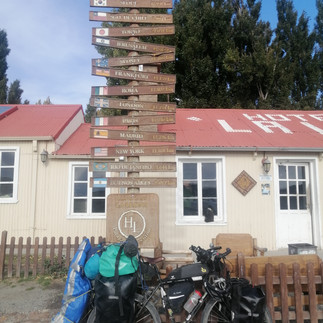LAGO ARGENTINO
- Ümit Nuri ACAR
- Jul 21, 2024
- 2 min read
The road starts windy, sometimes blowing from behind and sometimes from the front, i.e. a windy ride that we call a headwind. I thought I would never cross paths with the wind if I accepted the winter cold, but that's not true. However, some days are windy. The fact that my trip through El Chaltén, which I started as calmly as possible, is full of surprises that I did not expect, as always, motivates me even more. When I left El Calafate, which is on the shores of the Argentino Lagoon, I thought of visiting the other side of this lake. There doesn't seem to be much on the other side of the lake except a few village houses. When I say village houses, I wanted to write a little about these houses. People who go about their daily lives stay here to control the large plots of land called "Estancia". In the Argentine region, the estancias are so large that the owners of these plots do not know how many animals they have. Usually, the owners of these lands do not stay in these houses. The guardians of these lands are the families or the gauchos, whom we can call cowboys for Patagonia, do not take your eyes off them.
I stumbled upon one of these epics on the banks of Lago Argentino and a place with 3 or 4 very large houses. I was going to ask for water and a place to stay, and he invited me to one of the houses next door. The interior of the house still stands with old wooden and built-in closets. It's so big that it feels like an old mansion. Two kitchens, two bathrooms, a huge living room, and high ceilings. Around it is a huge warehouse with a few houses, large and small. A lot has happened around here, I thought I'd ask at the time, but then it occurred to me that these estancias are usually all like this.
I have read that in the period 1890-1930, Argentina was a great economic power. It can hardly be thought that during this period and even during the Second World War that, he received serious investments from all over the world. Perhaps those who fled the war, sought calm in their way, or saw an economic opportunity, may have built their towns as they wished, away from such cities. Some of the estancias have Russian influences, some German paintings, and some Italian architecture.
The next detour is a road along the coast of Lago Videlma. Right at the turn of the road, I am greeted by a place called La Leona, which is a mixture of hostels, restaurants and museums. Very nice and cozy place. It makes me very happy that there is a small museum in such a place. I rest here for a day and continue on my way. As you know, the road awaits me . . .



































Comments